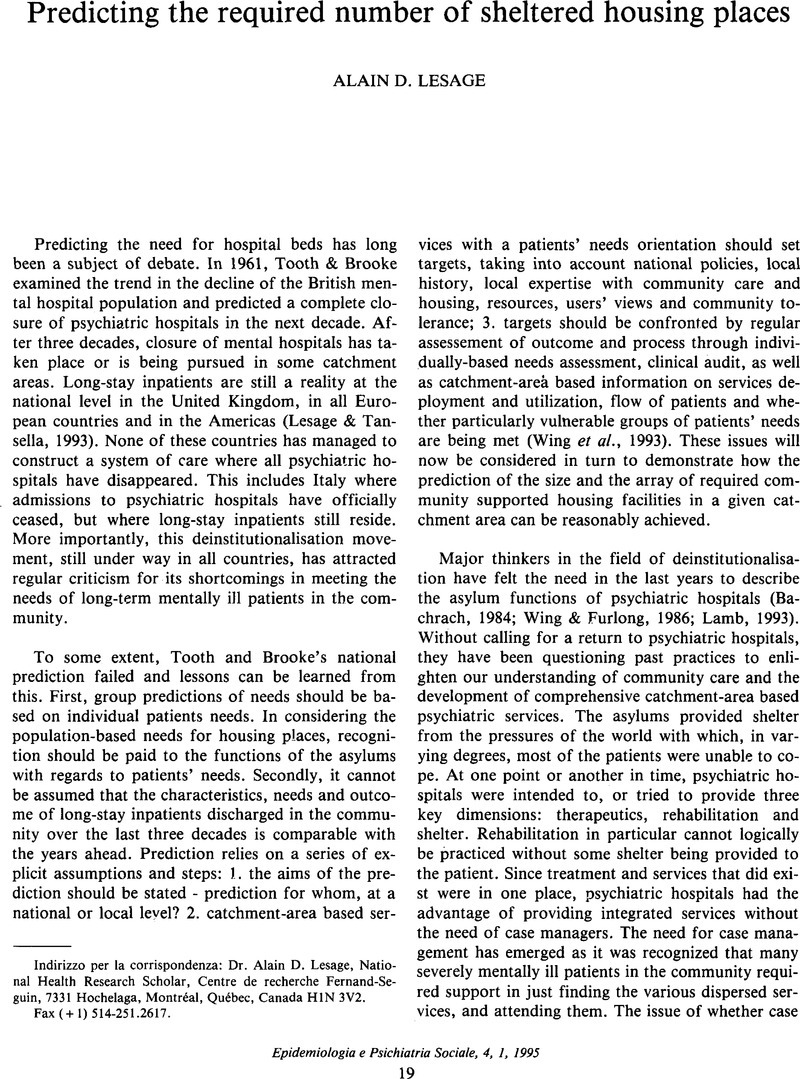Crossref Citations
This article has been cited by the following publications. This list is generated based on data provided by Crossref.
Saraceno, Benedetto
Barbui, Corrado
Bedoni, Alessandra
Civenti, Graziella
and
Frattura, Lucilla
1996.
Evaluation of dehospitalization policies of the former psychiatric hospitals of Regione Lombardia. QUALYOP study results. I: Structural resources, organizational procedures and activities.
Epidemiologia e Psichiatria Sociale,
Vol. 5,
Issue. 1,
p.
59.



